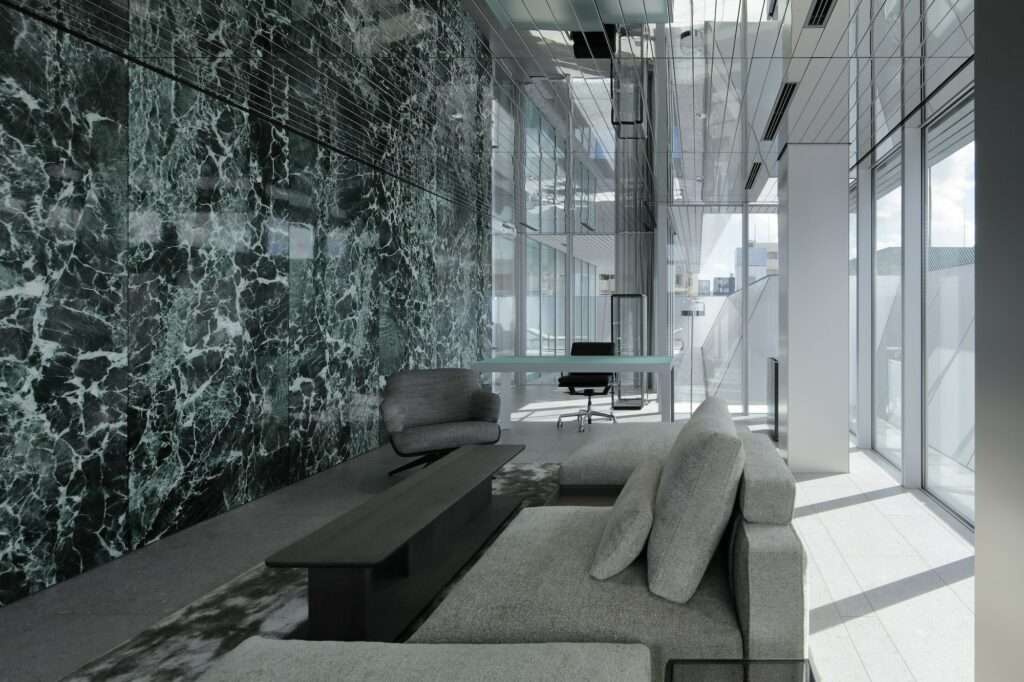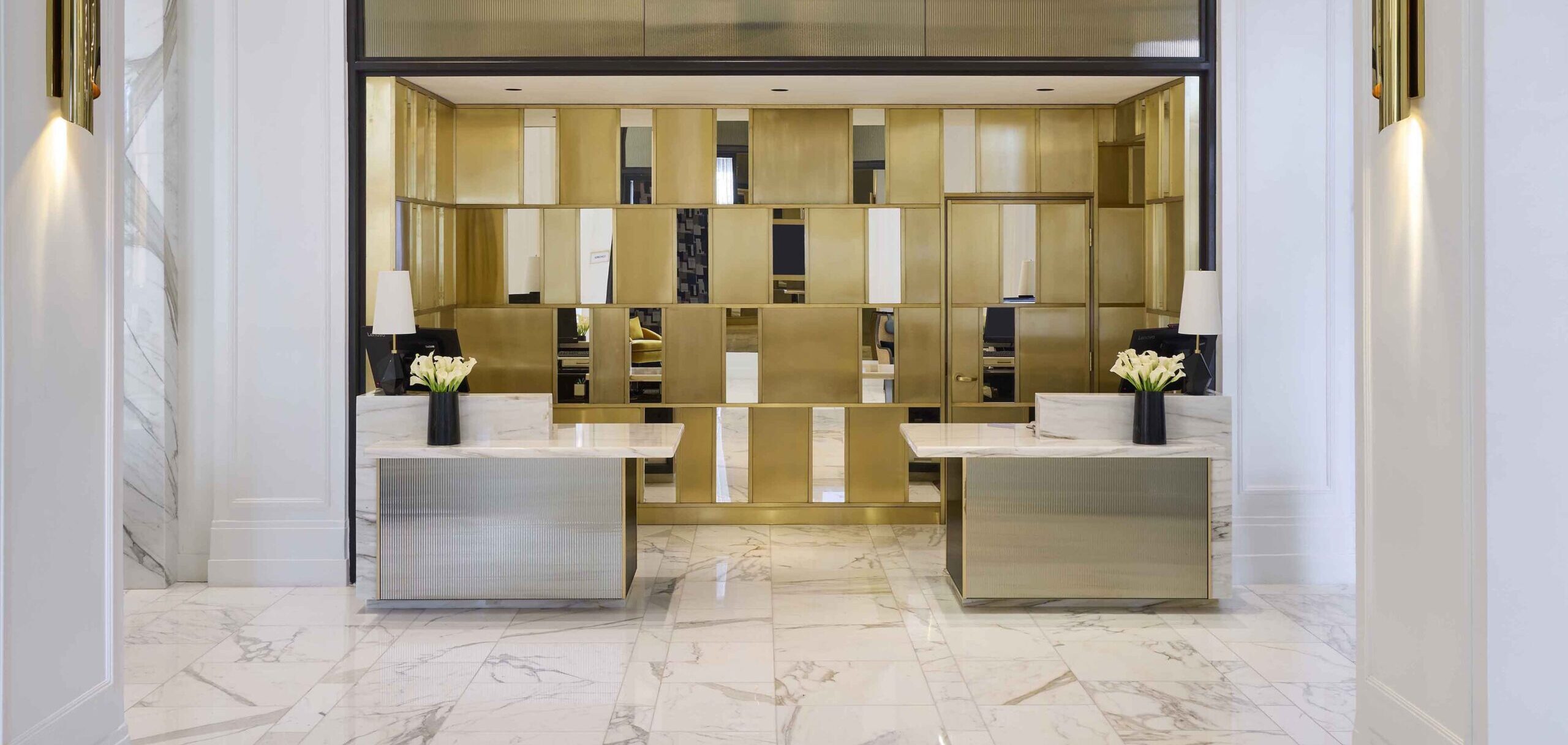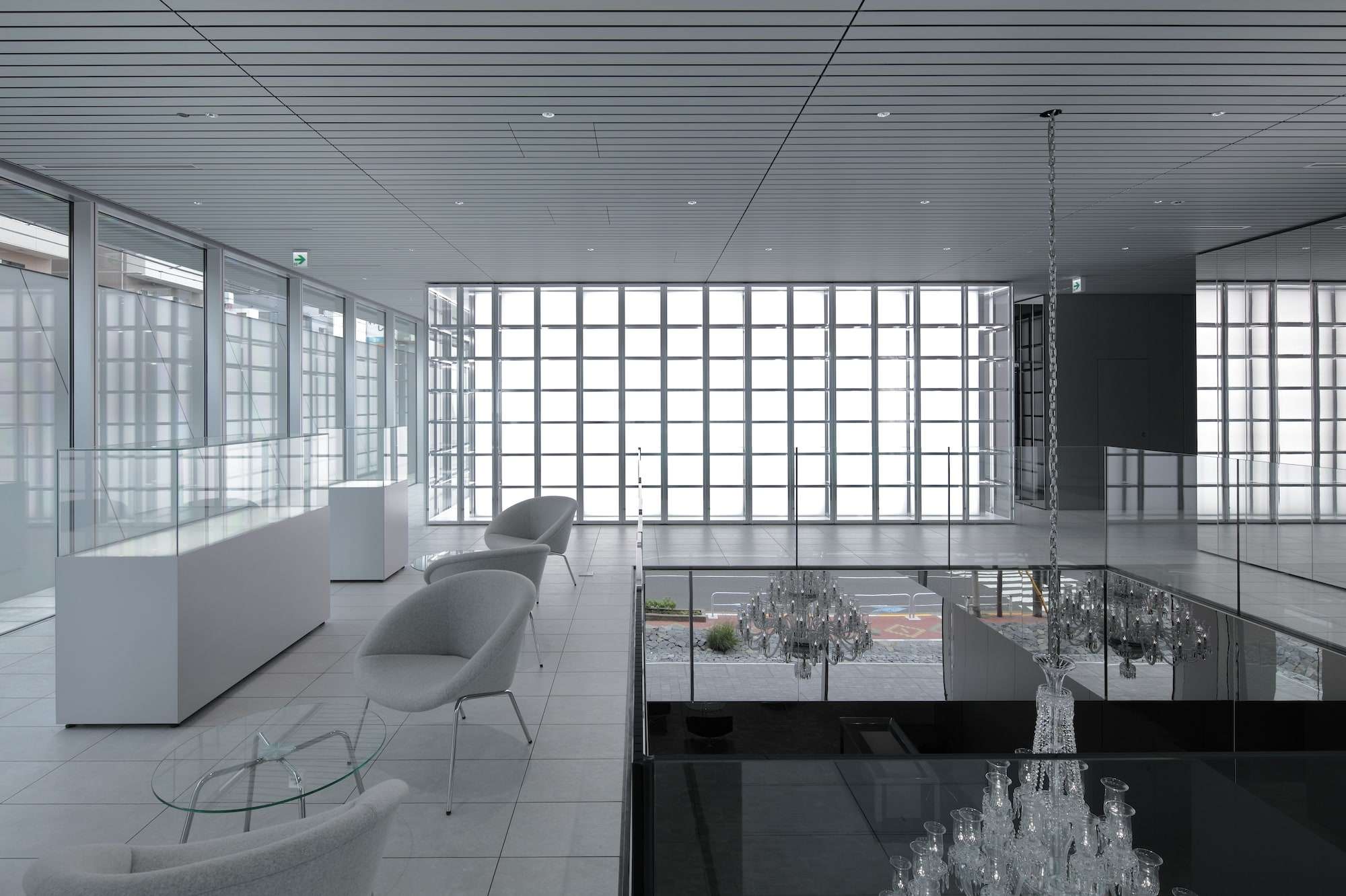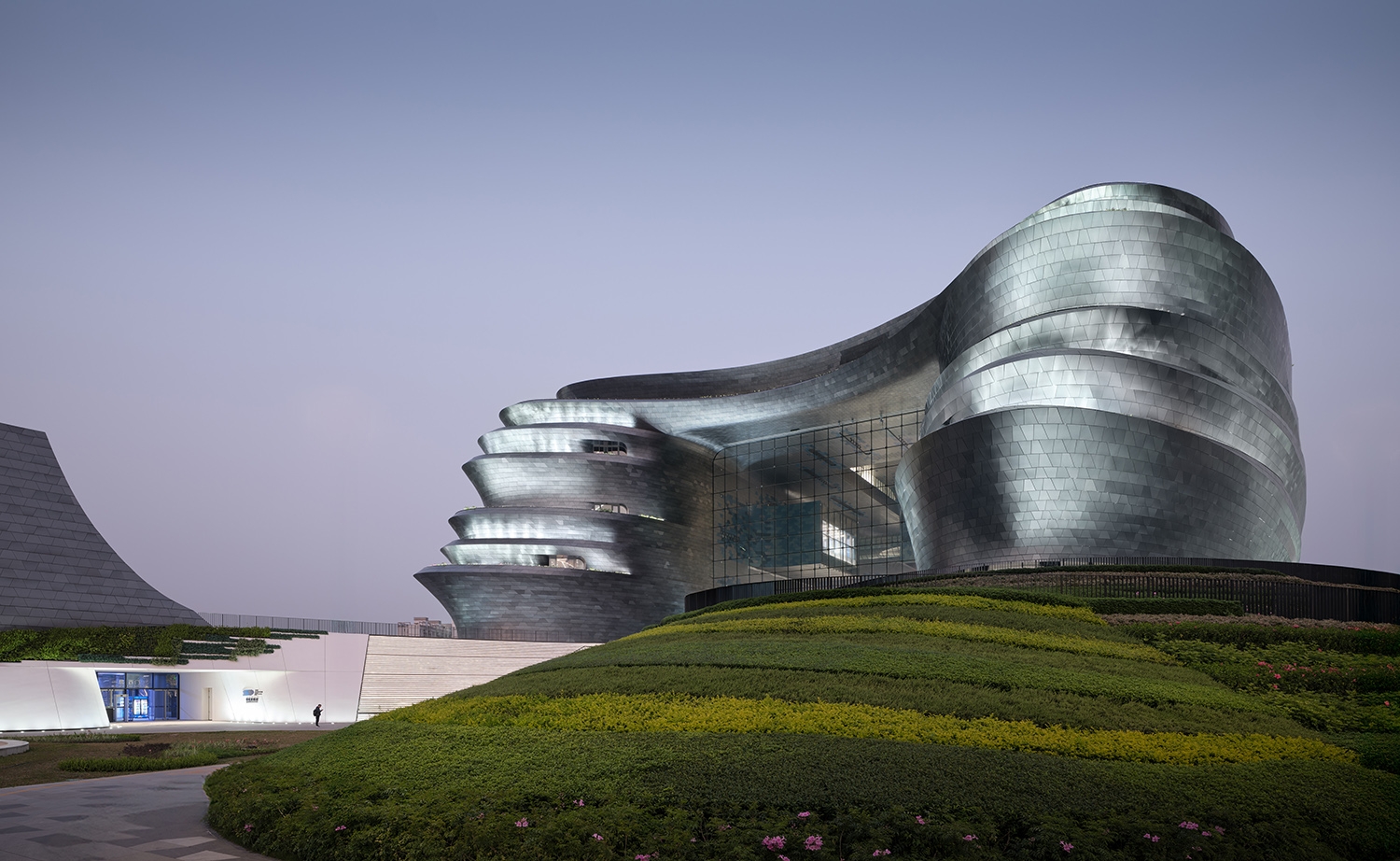Designed by Makoto Yamaguchi Design, Monospinal is a relocation project of a game production company’s headquarters in Tokyo. It aims to become a place for the highest level of creation that captivates fans worldwide, supporting the foundation of the game production process.
Almost all employees engage exclusively in creative operation, we focused mainly on providing a balance between concentration and relaxation while significantly removing the burden of operational work. It was achieved by introducing slanted walls that characterize the exterior and a system to control all facilities, including security, with tablets.
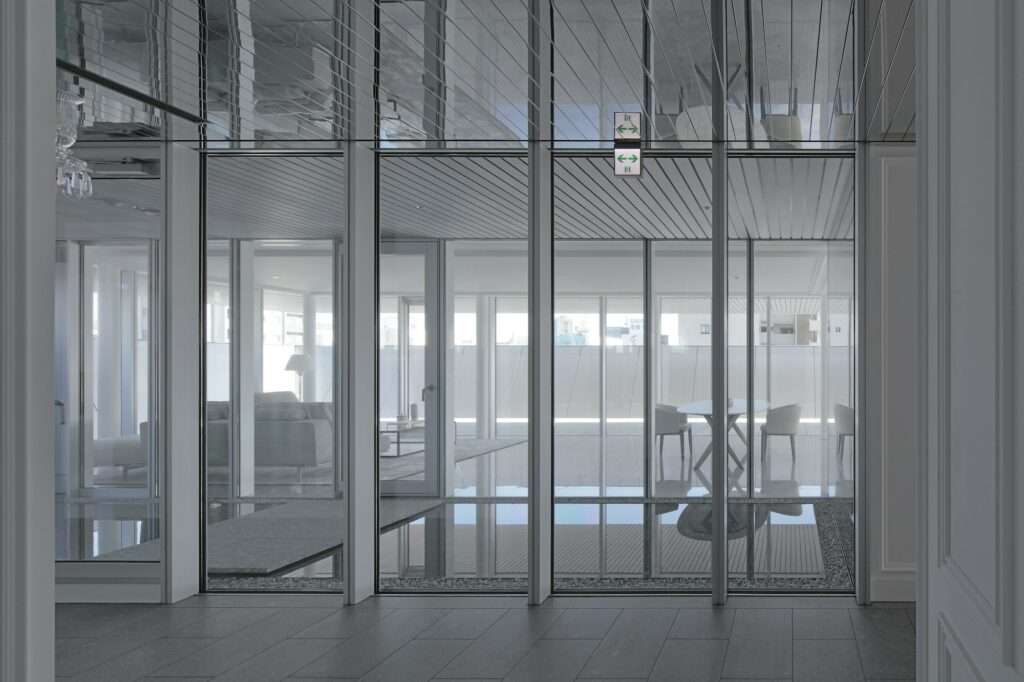
The areas used by visitors are on the lower floors, while the level of privacy and confidentiality increases as the levels get higher. On the second and third floors—that face the elevated railroad tracks—there are programs that require isolation from the outside such as the theater and the studios. The slanted walls are higher on the lower stories surrounded by existing buildings, whereas they are lower on the upper stories offering more sense of openness.
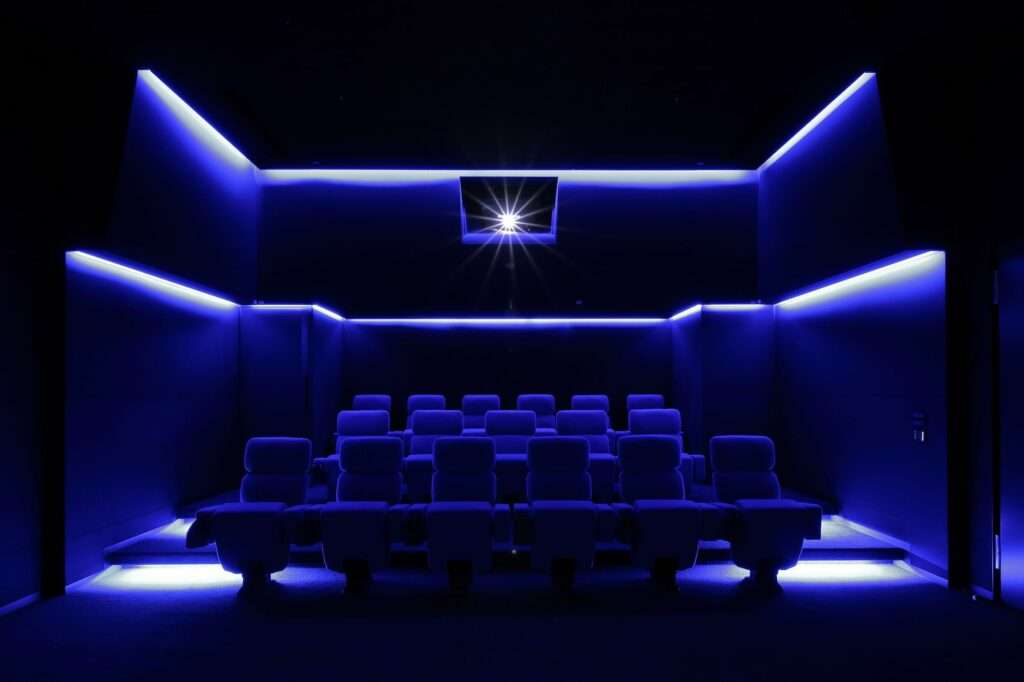
The dining room, lounge, and gym on the fifth floor offer employees spaces to unwind and recharge, while the seventh floor is reserved for executives, who use the space to engage in creative work or meet with important guests. On the rooftop, a barbecue counter and pool are among the amenities designed to create a relaxing environment for employees.
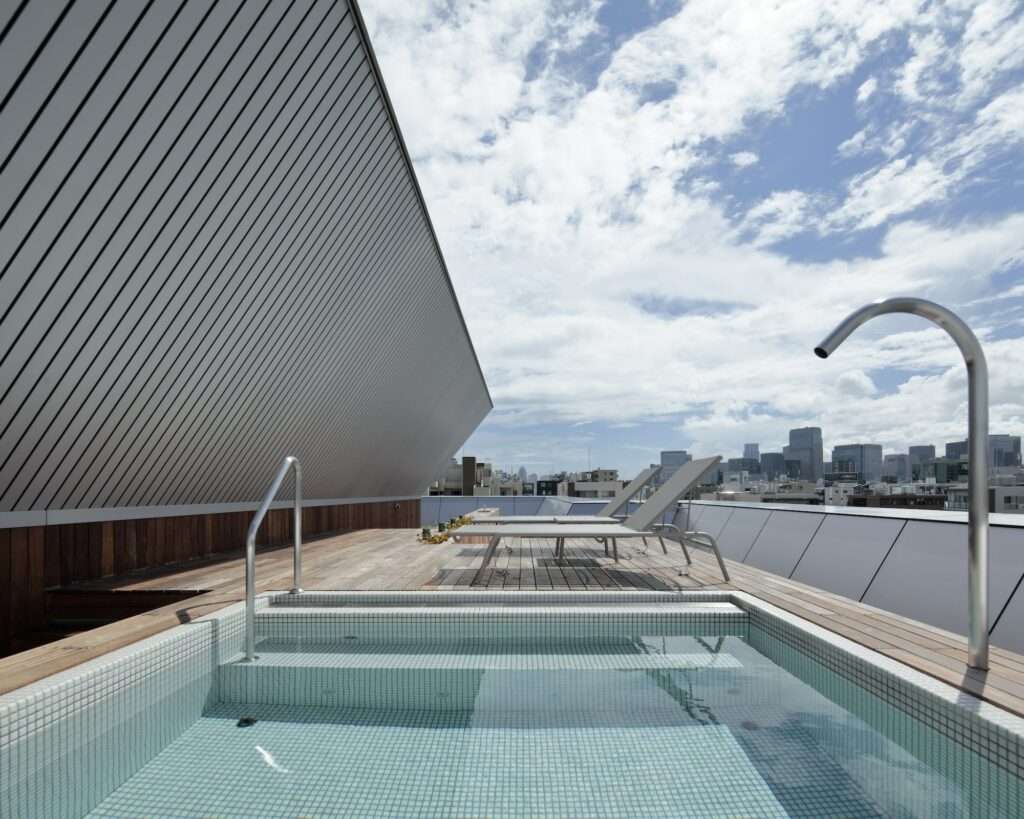
Details That Incorporate Video Game Elements
The landscape design, interior and exterior finishes, and fixtures all incorporate the style of the game world (the period and region in which the game is set, characters, items, etc.) created by the company as metaphors, which can be deciphered if you are familiar with the game. In other words, the headquarters building itself is made of the game.
For example, elements like the medieval-French-style chandelier and contemporary Italian sofas and tables on the first floor, as well as iconic facets of Japanese culture like bonsai trees and the pine trees on the building’s exterior, are all modeled after video-game settings that encompass different time periods and regions of the world. These various elements harmonize to create a space imbued with a game-like quality.
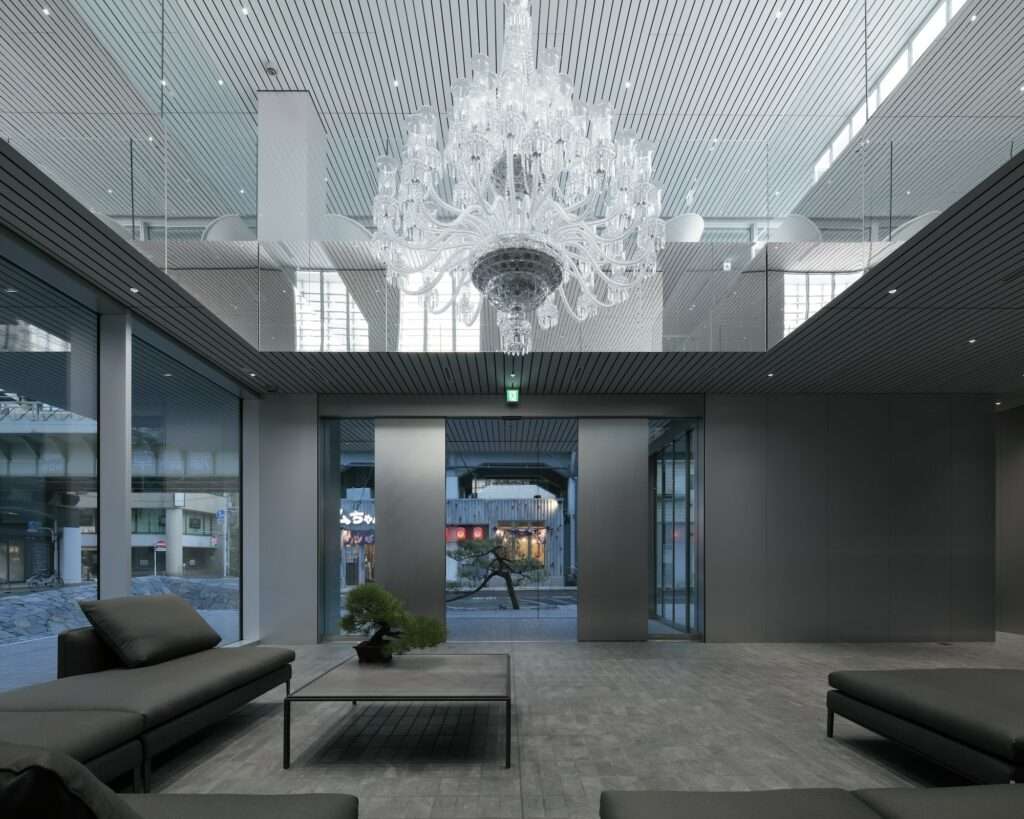
Enhancing the Environment
Facing the site is an elevated railway where trains pass every 1.5 minutes on average both ways. The site is also surrounded by small-scale buildings, each with a variety of tenants. While the slanted walls enhance environmental elements of light, wind, and sound, every wall height is optimized according to the different purposes on each floor.
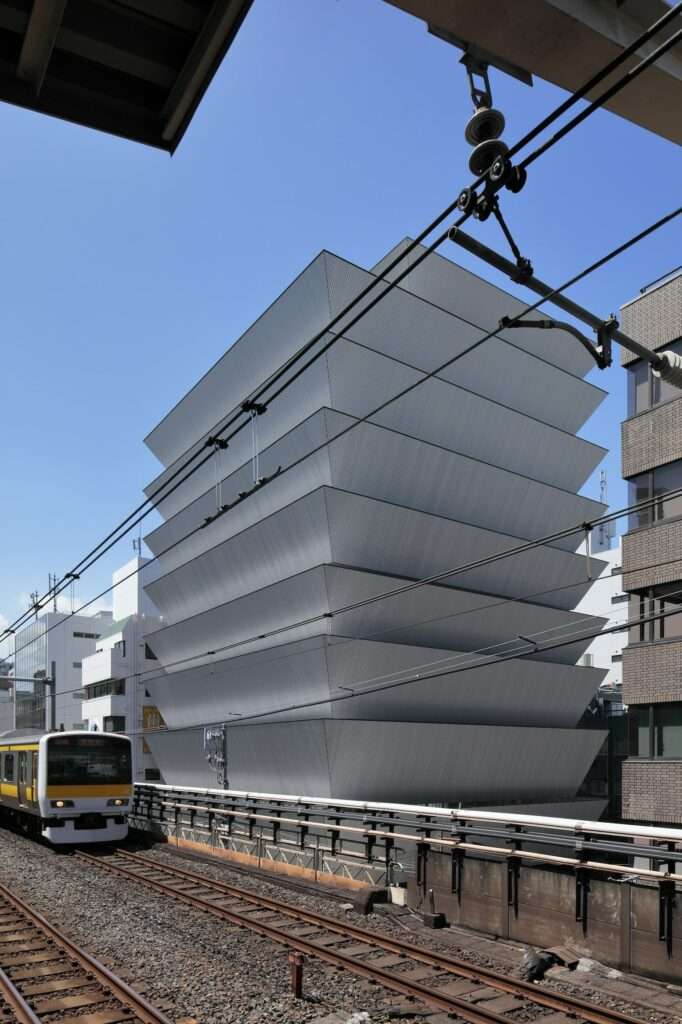
For example, behind the third-floor walls are studios for recording the voices of game characters. They are heightened as much as possible to reduce noise from the railroad. While the walls block the views of the surroundings, they reflect natural light to bring in indirect light, maintaining the world and ambiance of games during the recordings.
On the fifth floor, which is vertically further from and with a lessened sense of connection to the elevated railway, the lowered walls provide a cropped view of the cluttered cityscape and the sky. With a great balance between direct and indirect lights, while steadily taking wind into the interior, the room offers a relaxing dining experience.
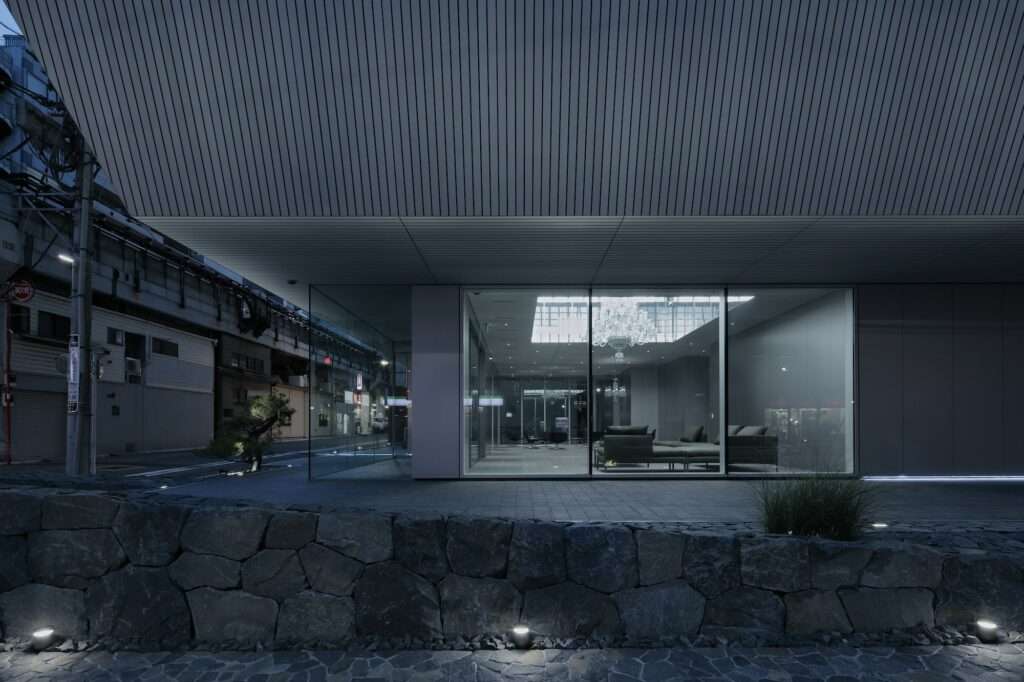
Reducing Operational Work and Energy Load
The control system that can be operated directly and intuitively on a tablet is fully linked to a scheduling system, resulting in improved energy efficiency. We built a system where users can input their schedules, and all facilities are prepared in advance for them. The same operations can be accessed from smartphones as well, and the security and equipment status in the building can also be checked and operated if necessary via the same application. The state-of-the-art security system that incorporates information management provides an optimal environment for safety and creative activities.
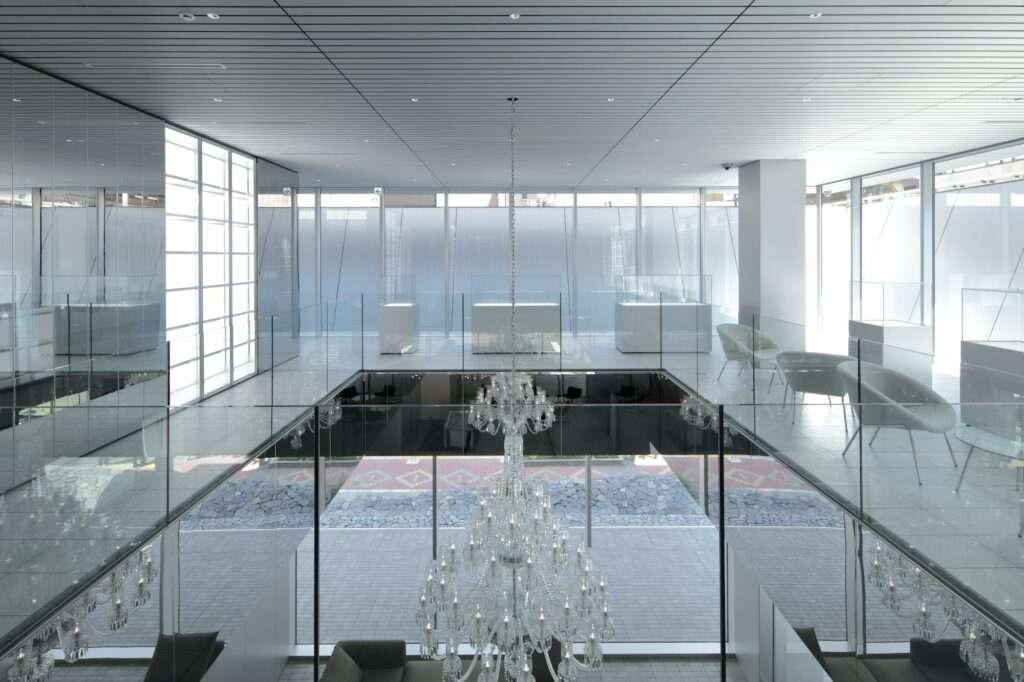
A New Landscape
The slanted walls protect the interior from the external gaze, making it impossible to tell what the building is for from the outside. Not being able to see the purpose is much the same for natural landscapes. The slanted walls are made of thin, ten-centimeter-wide aluminum plates, a material of relatively familiar scale to humans.
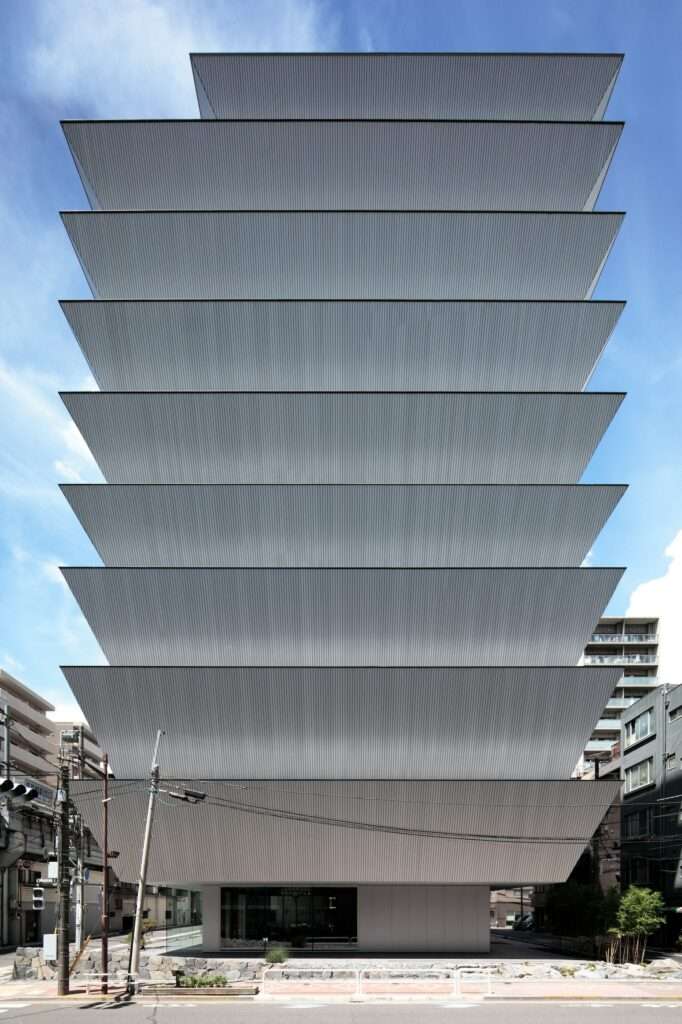
Structural Design
To be able to adjust the story height and the wall angle on every floor and to frame the sky view between the walls without any obstruction by structural elements, it was decided to isolate the slanted walls from the main structural frame.
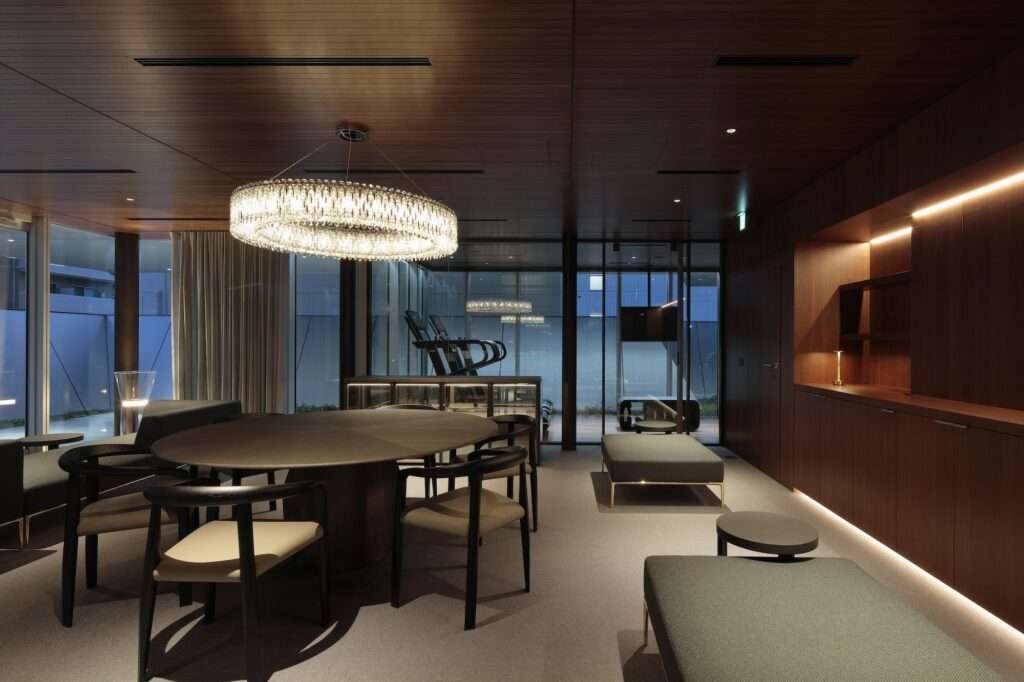
With offices on the fourth floor and above, studios on the third, and an entrance with a double-story void on the first and the second floors, the building vertically stacks spaces that require different spatial qualities. By using the third-floor studio space as a transfer structure with story-high trusses, connecting the relatively small column grid on the upper office floors with the structural system consolidated to the columns on the four corners on the lower floors.

The CFT columns are placed on the four corners to consolidate the load on top of the underground seismic isolation devices. This minimizes the number of devices installed while suppressing the pull-out strength, achieving a rational seismic isolation system.
